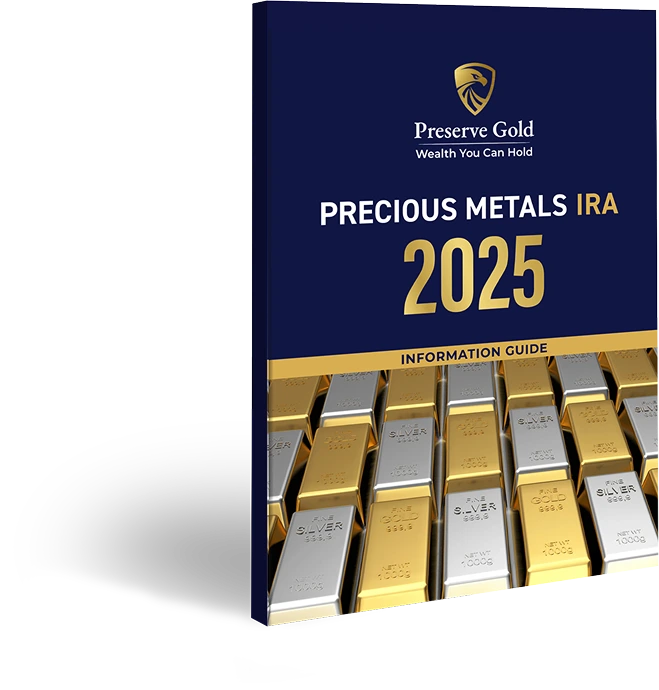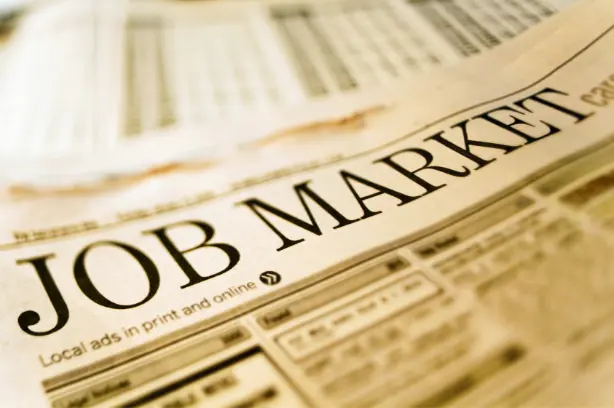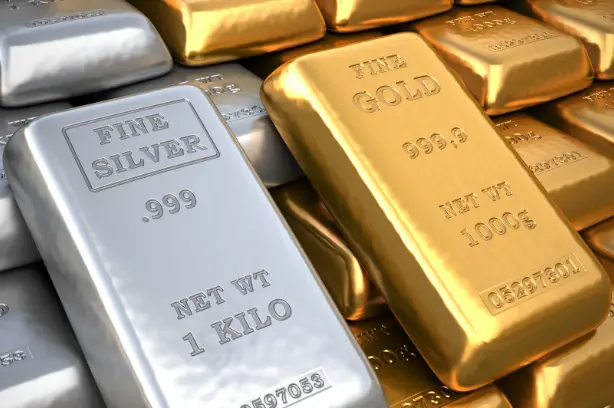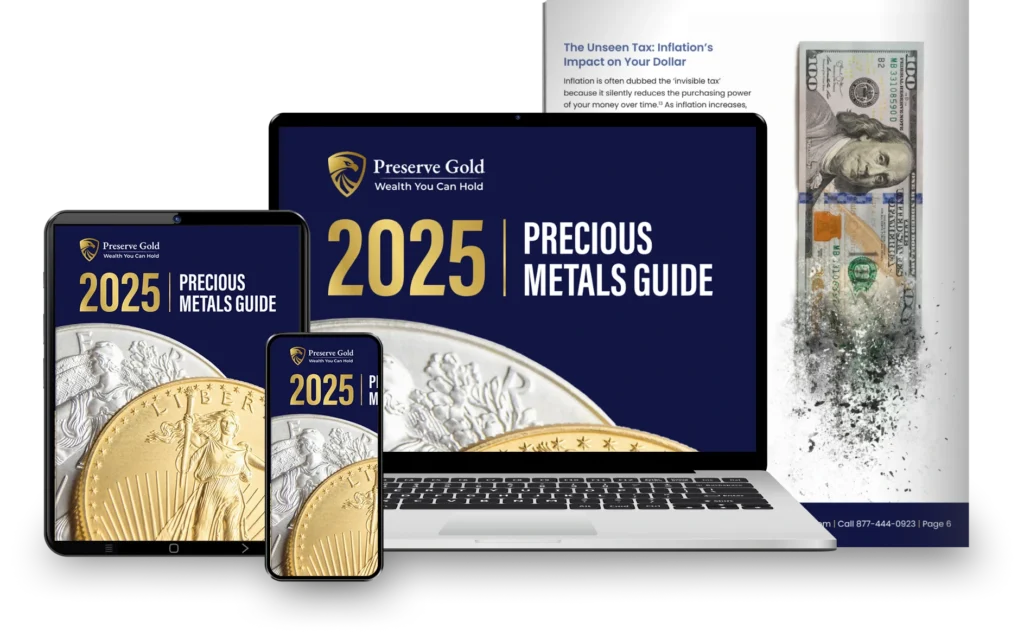By Preserve Gold Research
While the risk of a recession hasn’t completely disappeared, a new threat is looming over the US economy — stagflation. Unlike a recession, where the Fed can use monetary policy to stimulate the economy, stagflation poses a unique challenge as it combines stagnant economic growth with high inflation rates. A deadly combination that can have far-reaching consequences for the country’s economy, stagflation conjures up images of the economic downturn that plagued the US in the 1970s.
For years, experts have been warning of a potential stagflation crisis in the US. However, the release of the first-quarter GDP growth figures has intensified concerns about the possibility of stagflation becoming a reality. According to the Bureau of Economic Analysis, the US economy grew at an annual rate of 1.6% in the first quarter of 2024, well below economists’ expectations. Along with this sluggish growth, inflation has also been on the rise. In March, it reached 3.5%, the highest this year and well above the Federal Reserve’s target of 2%.
For a nation that has long prided itself on its robust economy, the news has been disquieting at best and panic-inducing at worst. Layer on soaring national debt and record-breaking government spending and the situation becomes even more precarious. Should stagflation materialize as some experts predict, the consequences could be dire, not just for the US but for the global economy as well.
First-Quarter GDP Analysis: A Closer Look at the Numbers
Gross Domestic Product (GDP), a measure of the total value of all goods and services produced within a country’s borders, is widely regarded as one of the most important indicators of economic health. Economists use it to gauge the overall strength of a nation’s economy, and policymakers use it to inform their decisions on monetary and fiscal policies. When an economy is healthy and growing, annualized GDP growth rates of around 2-3% are considered normal and sustainable. But, when growth rates fall below this range, it can be an early indication of potential economic trouble.
The US economy’s tepid 1.6% GDP growth in the first quarter of 2024 has Wall Street analysts raising red flags, not only about the current state of the economy but also about its future. Much lower than the expected 2.7% growth rate, the first-quarter numbers marked a sharp fall off from the 3.4% growth rate seen in the previous quarter and a far cry from the 4.3% growth rate recorded in the third quarter of 2023.
A closer look at the details of the GDP report reveals that a confluence of factors has contributed to the sluggish growth. Consumer spending, which accounts for roughly 70% of economic output, saw a modest 2.5% gain in the first quarter that lagged behind the 3.3% uptick seen in the last quarter of the previous year. Wall Street had expected in a 3% growth in consumer spending, but cutbacks in gasoline consumption and energy spending dragged down the numbers.
Despite the overall slow pace in the first quarter of 2024, fixed investment and state and local government spending were bright spots that helped prevent a negative turn in GDP. However, much of these gains were offset by a drop in private inventory investment and a rise in imports. Net exports, a measure of how much a country exports compared to what it imports, also weighed down on GDP growth as the trade deficit widened in the first quarter.
The first-quarter GDP numbers, while disappointing, were not entirely unexpected. A sense of cautiousness has begun to pervade American consumer sentiment as concerns over geopolitical uncertainty and rising interest rates have taken hold. The latest findings from the Survey of Consumer Expectations Household Spending Survey revealed that consumer’s expectations for household spending growth decreased to just 3% in December 2023, down from 3.4% in August 2023 and 4% in December 2022. This marks the lowest expectation since December 2020, indicating that consumer spending forecasts are approaching their pre-pandemic levels of 2.4%.
Reaccelerating Inflation, Shifting Expectations
At the same time, inflation has been picking up speed. The Consumer Price Index, a measure of the average change in prices for goods and services purchased by households, has been steadily rising since January, reaching 3.5% in March. Well above the Federal Reserve’s target of 2%, the increase marks the highest rate of inflation since September 2023 — and Americans are taking notice.
Rising prices are causing many consumers to reevaluate their spending habits and expectations for the future. With gas prices climbing 1.7% from February to March and food prices also on the rise, concerns about affordability are top of mind for many. Other categories like auto insurance, have seen even larger increases, with a 2.6% jump from February to March, and a 22% increase from March of last year. The Federal Reserve Bank of New York’s Survey of Consumer Expectations found that while median one-year ahead inflation expectations remain unchanged at 3%, consumers’ three-year-ahead median inflation expectations increased to 2.9% in March, from 2.7% in February.
At the same time, after several months of optimistic speculation regarding inflation rates and potential interest rate cuts, a growing number of market participants are aligning with the perspective long held by small business owners—that inflation is not subsiding as quickly as hoped. With Powell admitting a “lack of further progress” on inflation for the year, expectations for interest rate cuts have been tempered.
“Longer-term inflation expectations appear to have remained well anchored, as reflected by a broad range of surveys of households, businesses, and forecasters, as well as measures from financial markets,” Federal Reserve Chair Jerome Powell said in a statement in March.
Only 24% of small business owners now believe inflation has peaked — a decline from the previous quarter and a return to the sentiment from a year ago. The number of small business owners who think inflation will continue to accelerate has also risen to 75%, indicating rising apprehension about the stability of prices and their impact on their businesses. “Small business owners are the engine of our economy, and the data shows they are still pessimistic about overcoming inflation,” said Lara Belonogoff, senior director of brand management and research at SurveyMonkey.
Since inflation expectations can become self-fulfilling, the Fed closely monitors these indicators as part of its strategy to gauge future inflationary pressures. Doing so allows the Fed to anticipate and react to potential changes in inflation before they happen, helping to maintain stable prices and support the overall economy — at least in theory. However, with economic growth falling amid rising inflationary pressures, experts say the Fed may be facing a tough balancing act in the coming months.
Looking to the Past to Understand the Present
Amid growing concerns for the U.S. economy transitioning from recession fears to facing the specter of stagflation, economists are looking back to the 1970s for insights. A clarion warning of the dangers of stagflation, the 70s provide a cautionary tale for today’s policymakers. The decade saw a period of energy price shocks, geopolitical insecurity, and unmoored monetary policy in the aftermath of President Nixon’s decision to abandon the gold standard. Sputtering growth and soaring inflation rates plagued the economy during the time — a combination that many fear could repeat itself in the current economic climate.
A slowing growth rate, like the one reported for the first quarter, reflects slowing demand, while rising prices point to an overheating economy. Historically, a marked decline in GDP growth has often heralded the onset of a recession. However, this time, the context is different — the economy faces the dual challenges of slowed growth and mounting inflation. With parallels between the 70s and today’s economic conditions, some experts are predicting that stagflation could be just around the corner. “I worry that [the economy] looks more like the ’70s than we’ve seen before,” warned Jamie Dimon, CEO of JPMorgan Chase.
If stagflation were to take hold today, like a replay of the 70s, analysts say the consequences could be dire. Individuals and businesses alike could find themselves caught in a constricting economic vice, where stagnant growth and high unemployment intersect with escalating inflation. This uneasy equilibrium could make everyday living more expensive while simultaneously making jobs harder to find and keep.
For consumers, the purchasing power of their dollar could diminish, as wages fail to keep pace with the rising costs of goods and services — just as it did during the ’70s. Businesses, faced with increasing operational costs, may curtail expansion plans and cut back on hiring, further exacerbating the unemployment rate. And on a broader scale, the government may find itself unable to stimulate economic growth through traditional means such as interest rate cuts, as those could potentially worsen inflation.
As David Donabedian, chief investment officer at CIBC Private Wealth Management puts it, “This was a worst of both worlds report — slower than expected growth, higher than expected inflation.” With the potential for stagflation looming, experts say Americans may need to brace themselves for a bumpy ride ahead, as the economy works to find its footing and navigate the challenges ahead.
Precious Metals as a Lifeline
Whether or not policymakers can reverse the trend toward stagflation remains to be seen. But for individuals looking to help protect their finances from the potential consequences, precious metals may be able to serve as a valuable lifeline. Gold and silver have historically been viewed as a bulwark against inflation, preserving purchasing power as the value of paper currency wanes. As more individuals turn to these tangible assets as a diversification strategy, the demand for precious metals often rises while traditional financial assets may falter.
During the ’70s, when stagflation last reared its head, gold prices skyrocketed as investors sought a hedge against the economic uncertainty. From 1973 to 1979, inflation maintained an average yearly rate of about 8.8%, while gold witnessed an impressive annual return of around 35%. From around $500 an ounce in 1973, gold prices reached $2700 by the end of the decade, when adjusting for inflation. Today, we are seeing a similar trend, with gold prices reaching record highs in recent months as inflation concerns continue to mount. With this historical precedent in mind, it’s not surprising that many experts recommend using precious metals as a hedge against potential stagflation.
Billionaire investor Ray Dalio, who correctly predicted the 2008 financial crisis, is one of many who advocate for having a portion of one’s savings allocated to gold. In a recent interview, Dalio warned of an impending financial crisis as a result of mounting debt and inflationary pressures. “History and logic show that when there are big risks that the debts will either 1) not be paid back or 2) be paid back with money of depreciated value, the debt and the money become unattractive,” Dalio wrote in a recent note. “Gold, on the other hand, is a non-debt-backed form of money. It’s like cash, except unlike cash and bonds, which are devalued by risks of default or inflation, gold is supported by risks of debt defaults and inflation,” he added.
In addition to their inflation-hedging properties, precious metals also benefit from their inverse relationship with the dollar. This dynamic can make commodities more accessible to international buyers, further driving up demand and prices. When inflation undermines the nominal returns of conventional assets, precious metals stand out, especially when their prices increase due to limited supply or robust demand.
With first-quarter GDP figures pointing to challenges that, left unaddressed, could lead the U.S. economy down the arduous path of stagflation, Americans may find comfort in adding precious metals to their savings.







